

The Jack-O-Lantern’s Origins
It’s dark out. The wind blows through the branches, bringing a chill that isn’t necessarily due to the temperature. Suddenly you find yourself hyper aware of every sound around you, and you start as you realize you see a pair of eyes glowing at you…until you realize it’s a jack-o-lantern. Happy Halloween, indeed.
You may be wonder how jack-o-lanterns became so popular, or why we carve them out of pumpkins. To know the origins of jack-o-lanterns, we have to go all the way back across the Atlantic to the fens, or marshes, of rural Ireland. In the early 1600’s, the legend of a shadowy figure began to arise known as Stingy Jack (Jack the Smith, Drunk Jack, Flakey Jack, and other names are also in the folklore and can be used interchangeably).
The most popular version of the tale involves Jack first tricking the Devil into changing his form, then trapping him in his transfigured state. Jack then offered the Devil out of the deal in exchange for not taking his soul for a long time. Some longer versions of the story have the Devil being tricked 3 or 4 different times.
Eventually though, time caught up with Jack and he was unable to trick the Devil again. Stingy Jack was sentenced to roam the Earth for all eternity with nothing but an ember given to him by the Devil to light his way.
There is also other folklore from this time surrounding what’s known as ignis fatuus, or false fire. False fire is an actual occurrence— scientifically, ignis fatuss, is known as marsh gas and occurs during the spontaneous ignition of methane created by decaying plant matter in marshes or swampy areas. These two legends began to intertwine—when many people in the moors of the British Isles saw the naturally occurring marsh gas, they attributed to Stingy Jack.
Many people in those areas also continued the Gaelic celebration of Samhain, with its rituals of going from house to house in search of food and drink (these are the origins Trick or Treating). As it was naturally dark in pre-industrial revolution Ireland, many would carve turnips, potatoes or other root vegetables and add coals or candles to create makeshift lanterns to help guide those celebrating. Occasionally these would be carved with faces, a tradition that continues to this day in Britain and Ireland.
The waves of immigrants created by the Great Potato Famine of the 1840’s. As with most immigrants also had a role in traditional jack-o-lanterns. They arrived in America to celebrate Halloween and were able to find a very particular new world crop that was much larger and easier to carve than their root vegetables of home; the winter squash, the most famous of which is a pumpkin. (There are also several French recipes for a pumpkin soup that suggest carving pumpkins for decoration as early as the 1760’s).
Pumpkins themselves were introduced by the Indigenous Peoples to Europeans as early as the 1600’s, when tales of Jack first began to be told. Several cultures mixed together in celebration of Halloween, creating the iconic pumpkin faces we still know today.
https://carnegiemnh.org/the-jack-o-lanterns-origins/
I thought about planting pumpkins, and I really don’t remember why I didn’t. I certainly will next year.
my dad said growing basil was much more cost effective and a basil plant weighs almost nothing.
What's amazing are all the different verities. I usually keep mine through Thanksgiving - after that, they are usually rotten and ready to be tossed.
Happy Halloween to all!
I haven’t posted in a while because my Saturdays are so busy. Last day for my local farmer’s market. One of my favorite farmers is retiring this year. I think I will be spending the winter figuring out how to grow great lettuce.
We haven’t had a good enough frost for my plants outside to be pruned or pulled. I love having fresh basil in Halloween!
Off to get a couple more pie pumpkins at the farmer’s market. Great nutrition for the next few weeks!
please add me to ping list, if u would
Zone 7 now that we got rid of seven huge trees there is sunlight available for flowers. Planted hibiscus, lilac, balloon flower, lots of other flowers/plants along the fence. Picked the last of the winter squash. Other stuff in the greenhouse so i will need to winterize the greenhouse.

OK, flame me! LOL!

After a couple of years of trying to keep 'critters' & crows out of my garden, I was gifted with a very large roll of black plastic mesh in 2016. Using 10' length ¾ inch PVC 'Charlotte' pipe, I made frames and attached the mesh using zip ties. The panels were 3.5' tall & 5' wide. My beds at the time were 4' x 8' so the panels worked well. I later added 2 more beds & these were 4' x 10'. To accommodate the extra length & give a bit more room, I made some half panels & have used them as 'gates' between the 5' panels on the longer beds.
Having the lightweight panels I could easily set up & take down (either tied together with rope or as of late, loosely zip tied) was a real luxury after temporary fencing. After 6 years, the mesh is starting to degrade & I had to patch a couple of places where it was breaking down. Also, the zip ties get brittle from cold/heat – they last maybe a year, some a year and a half. I am constantly replacing zip ties on panels every spring & fall, taking at least half a day each time. Despite being a great system, something more durable would save a lot of work on zip ties and “sturdy up” the panels (I did not glue the corners). I always wanted to replace the mesh with wire & I recently found stainless steel 'zip ties' so it seemed a perfect time to make the change.
It's been a learning experience and after re-doing the first panel & figuring things out as I go along, I've got a 'system' pretty much in place. The hardest part has been the metal zip ties. They are not 'sharp' until you cut off the excess and that end is like a razor blade. The safety solution that I've settled on is to wrap the tie with weather resistant duct tape. Also, I no longer cut the tie – I just wrap it back over the locking head (which keeps it good and tight) and then wrap with tape. The tape will eventually need to be replaced, but the ties won't break like plastic, so the panel structure should not be compromised.
So here are some pics …..
Mesh vs the galvanized wire/stainless zips.
Since the wire comes in 3' & 4' lengths & my panels are 3.5', I used 4' wire. I'm not cutting off the excess – keeps a nice smooth edge top & bottom & adds some extra height. If it gets too annoying (which I doubt), I can always cut it off.
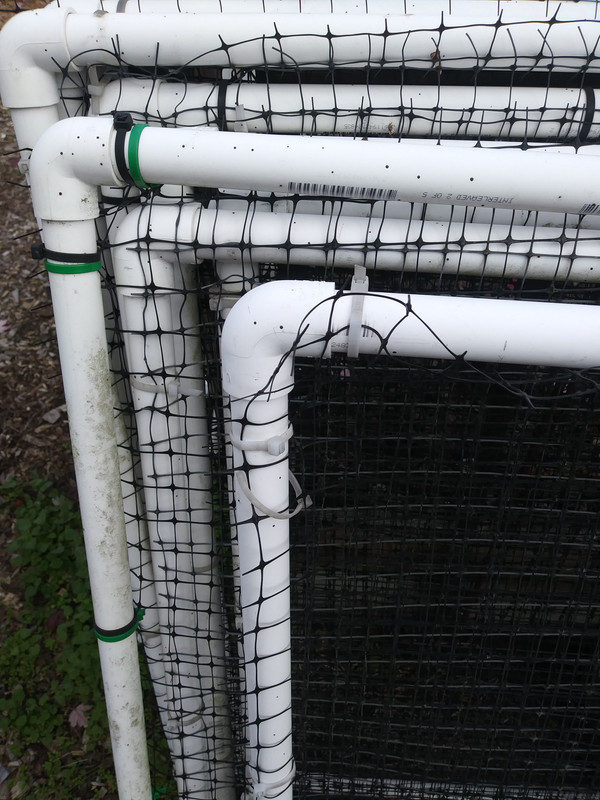
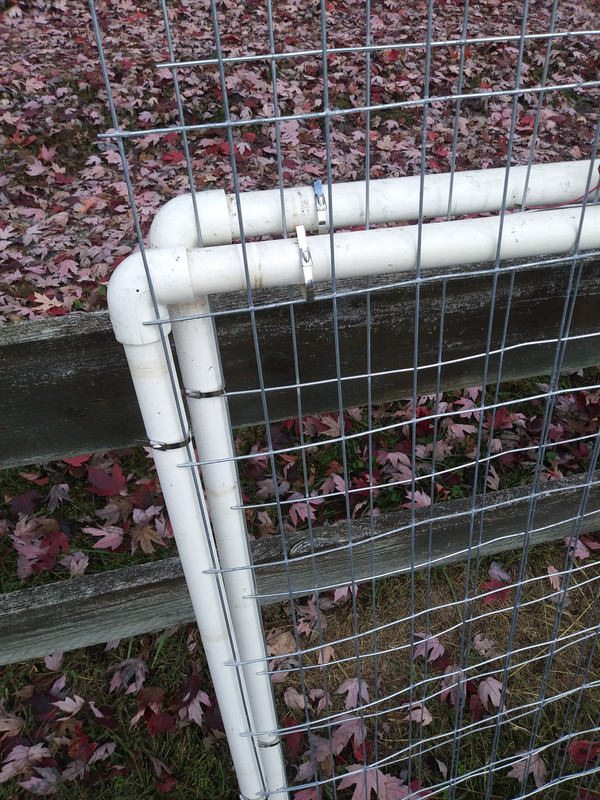
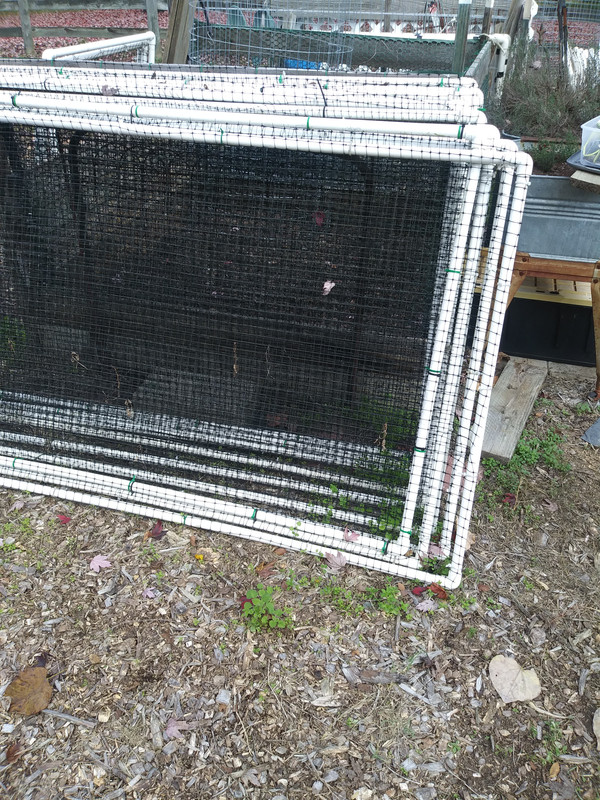
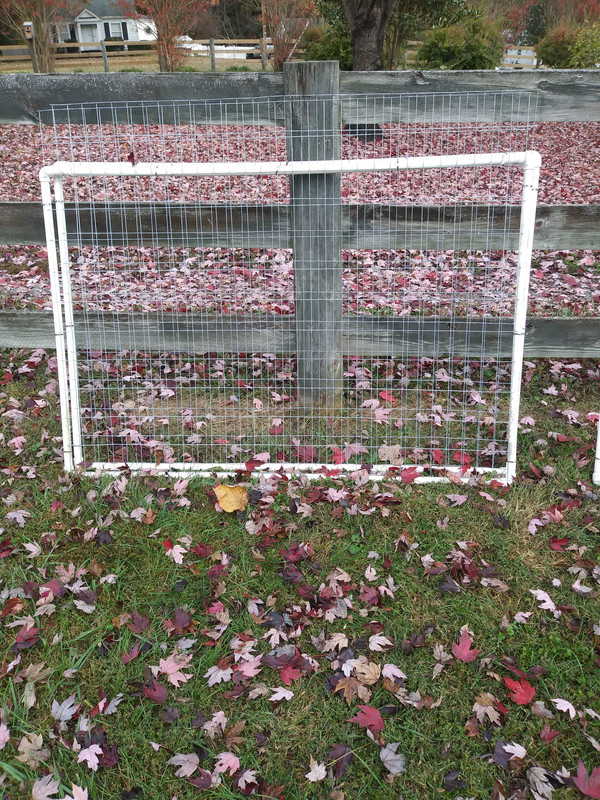
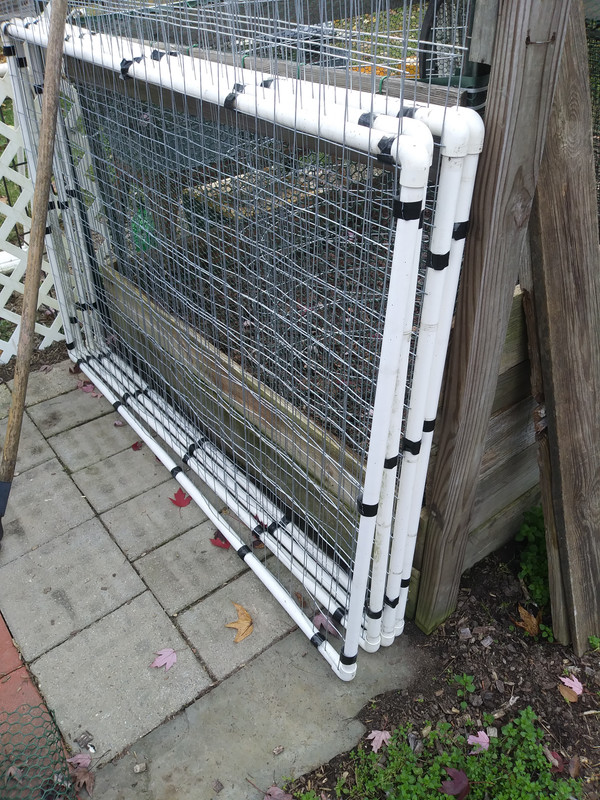
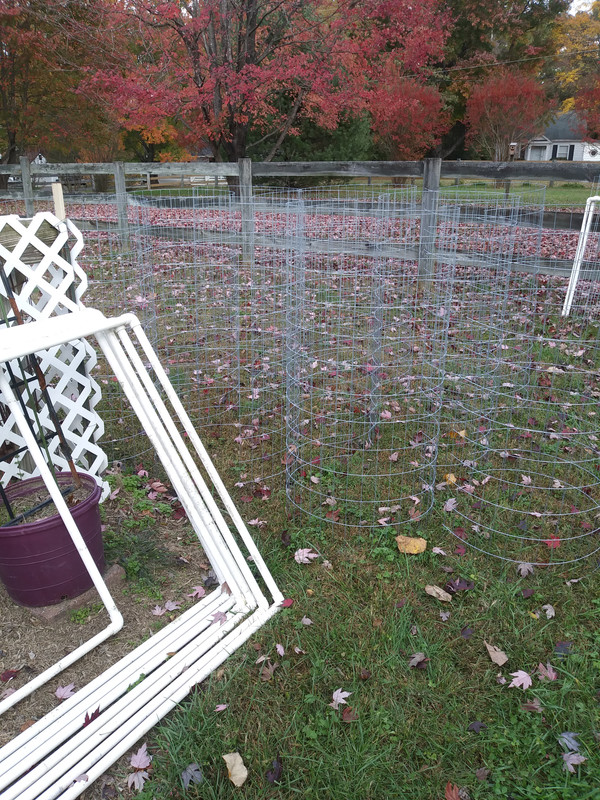
This past week was wet, then warm days/frosty nights, followed by more wet here in Central Missouri. We need the moisture, but it would be nice if it could come during the middle of the week.
Mrs. Augie’s holloweenie party returned to the schedule after two years MIA due to the rona fears. The rain held off long enough Saturday night to get a hayride in. One of the couples in attendance are refugees from the communist state of Illinois who recently moved from Chicago to a little country town near Lake of the Ozarks. They are much enjoying their new-found freedom here in Misery.
In the greenhouse I have green salad sprouting in the planter boxes and crucifers coming in starter cells. Party preparations didn’t allow time to put the plastic sheeting over the green bean arbor. I’m hoping to find the time to get that done this week. Still have a good bit of cleanup to do in the garden before I can finish up the compost addition, but I’ve got all winter to get that accomplished.
So are you saying we don’t know Jack?